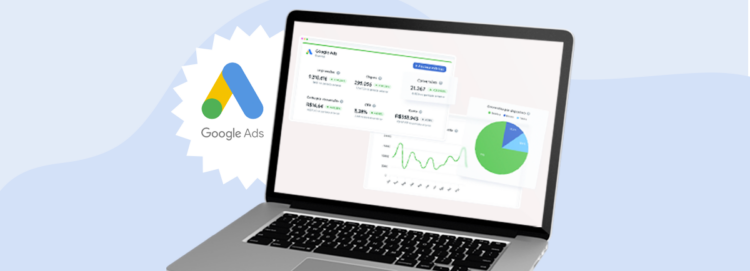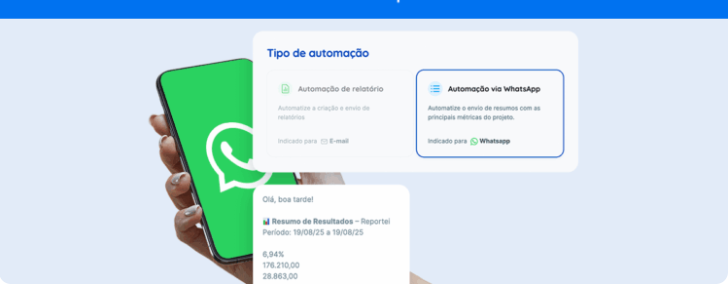Discover what Google Ads is, the benefits of the platform for your strategy, and how to start running your ad campaigns
When it comes to online advertising, Google Ads stands out as one of the most significant tools for boosting a brand’s presence and attracting potential customers.
Thus, if you’re about to take your first steps in digital marketing, advertising on the world’s largest search engine offers several short- and medium-term benefits, even if the process might seem daunting at first glance.
Therefore, in this article, we will unveil the fundamental concepts of Google Ads, best practices, and strategies to ensure that each investment results in visibility, clicks, and ultimately, conversions. Follow along with this complete guide!
What is Google Ads and Why is it Important for Digital Marketing?
Google Ads, formerly known as Google AdWords, is Google’s online advertising platform that helps businesses promote ads for their products and services on search engine results, partner sites, YouTube videos, and much more.
This tool allows advertisers to reach a specific target audience based on keywords searched by users, geographic location, interests, and other demographic criteria.
Because of this, the importance of Google Ads in digital marketing is undeniable. Among the reasons why this platform is vital for online strategies are:
- Instant visibility: Unlike SEO strategies, which can take time to yield results, Ads investment provides short-term visibility. As soon as a campaign is activated, ads can appear in search results and reach potential customers.
- Precise targeting: Google Ads offers advanced targeting options, allowing advertisers to reach their target audience with extreme precision – whether by location, devices, languages, interests, and online behaviors.
- Measurability and analysis: One of the platform’s significant advantages is the ability to measure campaign performance in real-time. Metrics such as clicks, impressions, conversion rate, and return on investment (ROI) can be monitored, allowing continuous adjustments for optimization.
- Budget control: Advertisers have total control over their spending, able to set daily or monthly budgets. This enables effective financial management, ensuring that the investment aligns with marketing objectives.
- Customization: Lastly, campaigns can be tailored according to specific goals, whether to increase sales, generate leads, or promote brand awareness.
In summary, Google Ads is an indispensable tool in digital marketing, offering advertisers an effective platform and all the functionalities to reach their target audience, increase online visibility, and drive business growth.
Step-by-Step Guide to Creating a Google Ads Account
Creating a Google Ads account is straightforward. However, before starting, you need an email address, and it’s recommended to have a website – even without one, you can still advertise with Smart Campaigns, which can be set up in about 15 minutes.
Simply visit the platform’s homepage, log in with your Gmail account (or create one), and start creating your first campaign, either in Smart mode or Expert mode, as we will show next.
If you wish to create an account without setting up a campaign, you can skip to confirming business information, such as billing country, time zone, and currency. Once done, conclude the operation to access the account.
How to Create a Campaign on Google Ads
The first ad campaign on Google will be a step-by-step process to understand the tool’s functionality, from defining an objective to selecting a payment method. Below, we show how this path looks in Expert mode:
Defining Objective and Goal
The first step in the campaign is defining the objective you want to achieve, such as increasing sales, generating leads, or boosting website traffic.
After that, you can choose or create a goal to help the platform track your results and optimize the campaign based on your investments.
Campaign Type
The next step is to define the campaign format you’ll run according to your objective. For example, you can select Search Network, Display Network, YouTube, or Performance Max – intelligently reaching users across various channels.
Following that, the platform will ask you to name the campaign to facilitate tracking in the future.
Bid Strategy
Continuing, you’ll be directed to the bid strategy step, defining how much an advertiser is willing to pay per click or another action resulting from their ads.
Thus, setting a bid depends on the campaign’s objective and will guide the platform in displaying your ads. This can directly affect your results and competition with other advertisers for the top ranking.
Campaign Setup
Once the bid is set, it’s time for general campaign settings, such as defining the location where it will appear, languages, ad display scheduling, among other platform features.
Ad Features
The next step in the process is defining keywords, ad groups, and ads for your campaign – depending on the chosen format.
At this point, you can use a keyword planner to assist in selecting the ideal terms related to your company, products, and content you wish to promote.
Another interesting aspect is that Google Ads helps develop effective ads, guiding on creating titles, including keywords, customizing texts, and much more.
Budget
One of the final steps in creating campaigns is setting the daily budget you wish to spend on the campaign as a whole. This expenditure may vary between days but will always maintain the average you establish.
Lastly, the platform will ask you to review the information before finalizing the campaign setup. If everything is correct, simply activate it for the ads to start showing on the platform.
How to Monitor and Measure Results on Google Ads?
After creating your campaigns, an essential step is monitoring the results they generate. For this, Google Ads provides a comprehensive reporting tool that allows tracking the quality of creatives, clicks, generated conversions, cost per click, and, of course, the obtained ROI.
More than closely analyzing these data, it’s crucial to use them as an information source to optimize campaigns and make them more efficient for your paid traffic strategy.
Moreover, Reportei can assist in this process, as our platform allows you to generate Google Ads reports in seconds, with all the most important metrics about your campaigns and an easy-to-analyze template.
Additionally, you can create dashboards for real-time monitoring and even use our artificial intelligence feature to make data analysis more precise and obtain valuable insights that help improve ad performance.
Interested in learning more about Reportei’s benefits? Take advantage of a free 3-day trial and get an up-close look at Google Ads reports and other social media!



